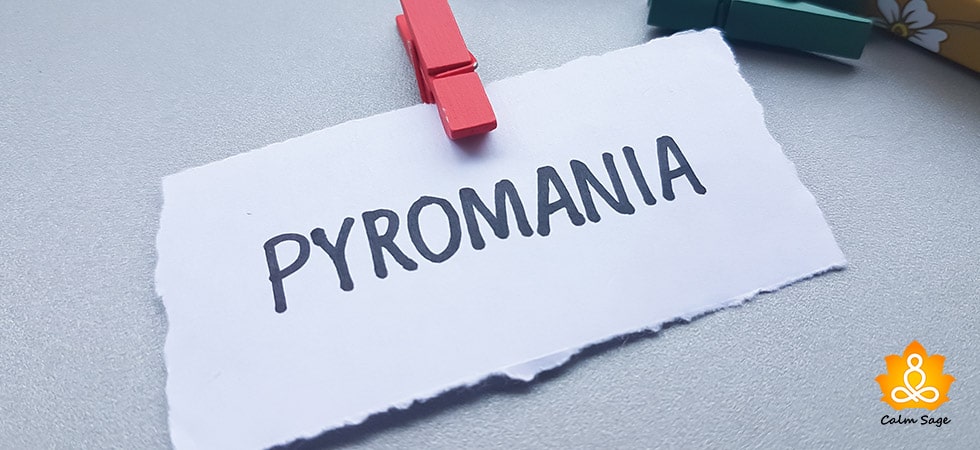Identifying Borderline Personality Disorder Triggers (And How to Avoid BPD Triggers)

Borderline Personality Disorder or BPD is a severe mental health disorder that can be described as experiencing unpredictable mood swings, impulsive behaviors, and unstable self-image. If you’re diagnosed with BPD, then you can also experience frequent feelings of anger, depression, and anxiety that can last longer than expected.
People struggling with borderline personality disorder (BPD) often find it hard to manage romantic relationships, stable jobs, and social interactions. For the most part, people with BPD can lead a healthy functioning life, however, some events may trigger their symptoms, intensifying them.
Some of the most common BPD triggers can include rejection, abandonment, or recurring traumatic memory. In this article, let’s take a look at some of the BPD triggers, what a BPD episode looks like, and how to avoid BPD triggers.
What Are BPD Triggers?
A trigger can be defined as, “an event that is the cause of a particular action, process, or situation”. However, I’ve seen many people use the term “trigger” wrongly. In this case, a trigger can refer to an event that intensifies the symptoms of borderline personality disorder and can either be external (for example, rejection) or internal (for example, a traumatic memory).
Triggers can worsen your symptoms of BPD and more often than not, one trigger can follow another, starting a chain.
Here are some common BPD triggers that you should know about:
1. Relationship Triggers
One of the most common triggers for BPD is relationship triggers and this includes fear of being rejected or abandoned by their partners. These triggers can cause and intensify feelings of anger and fear. In some severe BPD cases, these triggers can cause self-harm, impulsive actions, and even suicide ideation.
An example can be; someone with BPD may jump to a worst-case scenario when their partner doesn’t answer their phone. This can cause their thoughts to spiral out of control and arrive at a conclusion that might not be the right one. These thoughts may then trigger a strong emotional reaction, leading to self-harm.
2. Trauma Triggers
Another common BPD trigger is trauma or more specifically, childhood trauma. Childhood trauma plays a major role in the development of borderline personality disorder. Many research studies have found that people with BPD have a higher rate of childhood abuse, violence, and trauma.
If someone with BPD remembers a traumatic childhood memory, then it can be a trigger and can worsen their symptoms.
3. Cognitive Triggers
As I’ve mentioned above, triggers for BPD can be external or internal. These cognitive triggers are internal and can include random troubling thoughts and criticism. This BPD trigger is common in individuals who had a traumatic childhood experience such as child abuse. A memory of a past event can trigger or intensify the symptoms of BPD.
Another trigger can also include criticism. People with BPD are sensitive to criticism and if they are criticized, they may not see it as an improvement opportunity but rather as an attack on their personality. This can trigger their symptoms and worsen their actions.
4. Professional Triggers
Another common BPD trigger can include losing a job or feeling insecure about their profession. This kind of experience can trigger feelings of rejection and criticism, intensifying their symptoms and behavior. Anything that makes them feel professionally insecure can worsen their symptoms.
What Does A BPD Episode Look Like?
Each experience with BPD is different and unique to the individual. Each symptom can look different, however, a common BPD episode can include:
- Intense emotional outbursts
- Period of high depression or anxiety
- Suicidal ideation
- Self-harming behaviors
- Impulsive actions
- Unstable self-image
- Detachment from reality, and
- Substance abuse
If you or your loved one are struggling with suicidal thoughts and self-harming behaviors then it is recommended that you contact the National Suicidal Prevention Helpline 988 for help.
How To Avoid BPD Triggers?
Dealing with BPD triggers can be challenging but with the right help and intervention, they can be managed and even avoided. It can be hard to determine your trigger as each trigger is unique to the individual – thoughts, feelings, events. However, once you identify your triggers, with the right help, they can be managed.
Dealing with BPD triggers can include the following ways:
1. Identifying triggers:
The first step to avoiding BPD triggers is to identify your triggers. Learn what causes your triggers to flare up. Is it a memory? An event? A thought? When you know what triggers your symptoms, you can move on to the next step aka learning to eliminate or avoid the triggers.
2. Avoiding triggers:
After identifying the BPD triggers, you need to find the right ways to cope with them. You can start by either eliminating the trigger or avoiding them completely. For example, if a particular genre of movie triggers your emotional outbursts, then you can choose to not watch the genre anymore.
3. Finding professional help:
If you can’t eliminate or avoid BPD triggers, then the next step is to reach out for professional help. Many evidence-based therapy approaches can help you manage your symptoms of BPD and help you find the right coping techniques to avoid BPD triggers.
4. Practicing self-care:
Along with seeking professional help, you can learn to practice self-care techniques such as mindfulness exercises, grounding exercises, joining support groups, changing your unhealthy habits, or practicing healthy distraction techniques to avoid thinking about your triggers.
If your loved one with BPD is prone to submit to their BPD triggers, then here are some ways you can help them:
- Educate yourself about borderline personality disorder and its triggers. When you know what causes their symptoms to flare, you can help identify and control the triggers early.
- If your loved one does not want to seek professional help, then you can support them by patiently listening to them and what causes their symptoms to worsen. You can help them by encouraging them to avoid their triggers, accompanying them on their appointments, and offering to do their chores for them when they are too overwhelmed.
- Learn to validate their experiences. Listen to them and make sure they understand that you are there for them when they need your support. Just knowing that they are heard and accepted can be a big help to someone with BPD.
- Do not ignore their threats or actions that scream self-harm. Many people with BPD seriously experience suicidal ideation so do not take their threats lightly and make sure you help them seek the right help when they think about self-harming behaviors.
Understanding borderline personality disorder or BPD triggers is an important thing when it comes to helping and seeking help for BPD and managing symptoms of BPD. If you or your loved one needs professional help, you can contact your nearest mental healthcare provider or connect with the one below.
I hope this article helped you understand common BPD triggers and how to avoid BPD triggers. For more, you can write to us at info@calmsage.com or DM us on social media. You can also share your thoughts with us in the comments section below!
Take Care.




















